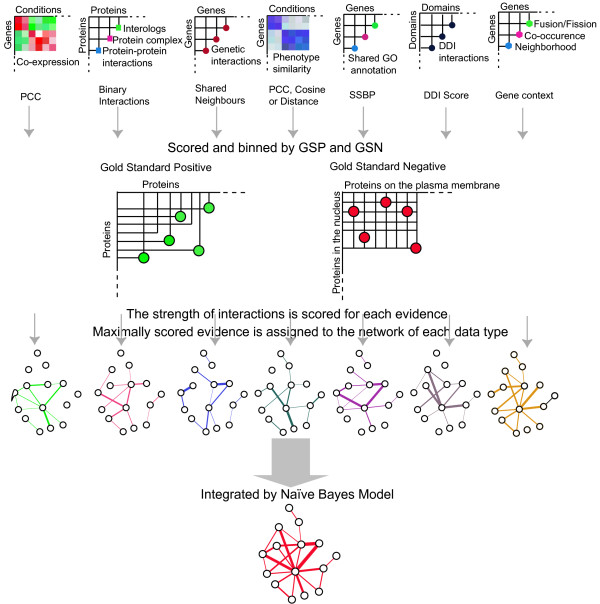Figure 1.
A brief description of the integration by the probabilistic model. Seven heterogeneous dataset types are gathered and evaluated by the gold standard positive (GSP, all the annotated protein-protein interactions from HPRD) and gold standard negative (GSN, possible protein pairs between the proteins on the plasma membrane and those in the nucleus). The potential of forming a protein-protein interaction is scored as the likelihood ratio (LR) for protein pairs to be true positive interactions versus true negative interactions, according to the GSP and GSN. Each interaction is assigned a LR within a data type. When evidence arises from more than one datasets within a data type, the maximal LR among the datasets is used for a gene pair. Then the LRs given by different data types are integrated by the Naïve Bayes model, which generates the final prediction score for a potential PPI by multiplying all the LRs from the seven distinct data types. Lastly, the final integrated network with an acceptable confidence level for each interaction is presented.

